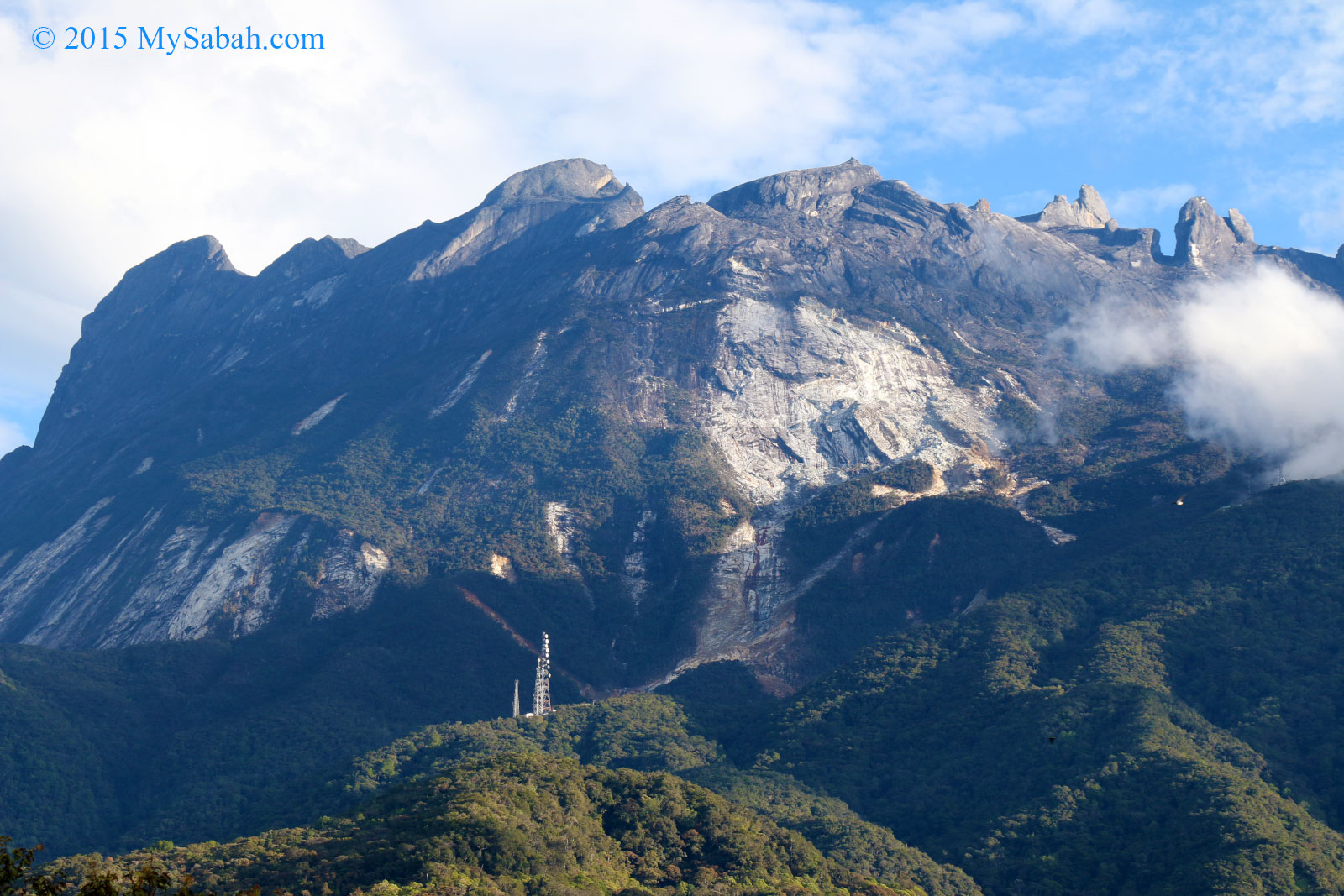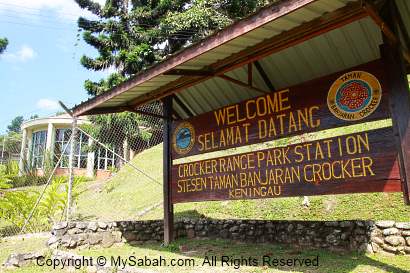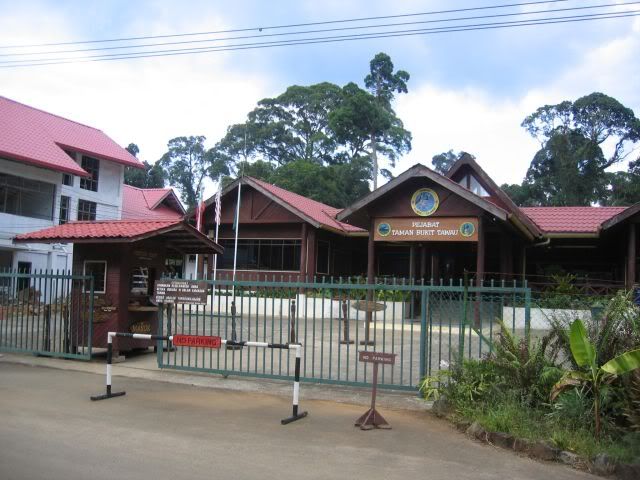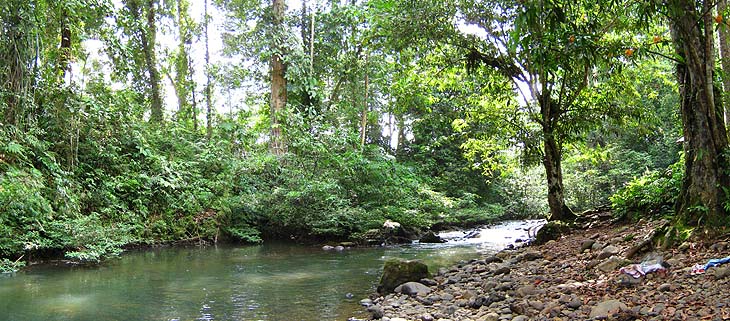Mount Bombalai is part of a volcanic field on the Semporna peninsula in northeastern Borneo. THe volcano lies in Tawau Division, Sabah, Malaysia across Cowie Harbour from the Indonesian province of East Kalimantan, and is the only volcano in the country. The low volcanic cone is located north of Sebatik Island and has a roughly 300-m-wide crater breached to the south. Two young lava flows extend almost to the coastal plain. The flows were considered younger than a lava flow radiocarbon dated at about 27,000 years before present, and the extrusion of basaltic lavas possibly continued into Holocenetime. this marks is the only known area of possible Holocene volcanism on Borneo. It is also known to be Malaysia's highest volcanic point.
MyBlog
Sharing information to everyone
Tuesday, September 26, 2017
Wednesday, April 19, 2017
MT. KINABALU PACKAGE COST FOR YEAR 2017
2D1N MOUNT KINABALU CLIMB (BUDGET) - MALAYSIAN ONLY
2017 Climb Package Rates:
| GROUP SIZE | MALAYSIAN | |||||||||||||||||||||||||
|---|---|---|---|---|---|---|---|---|---|---|---|---|---|---|---|---|---|---|---|---|---|---|---|---|---|---|
| 1 PAX | MYR 1,450 | |||||||||||||||||||||||||
| 2 - 3 PAX | MYR 1,185 | |||||||||||||||||||||||||
| 4 - 6 PAX | MYR 1,080 | |||||||||||||||||||||||||
| 7 - 15 PAX | MYR 995 | |||||||||||||||||||||||||
| 16 - 28 PAX | MYR 960 | |||||||||||||||||||||||||
| 29 PAX AND ABOVE | For big group discounts, please email info@mountkinabalu.com directly. | |||||||||||||||||||||||||
Note:
2D1N MOUNT KINABALU CLIMB
2017 Climb Package Rates:
For those who are planning to climb Mt. Kinabalu, you can refer these packages. If you want more information, you can refer to http://www.mountkinabalu.com/packages | ||||||||||||||||||||||||||
Tuesday, April 18, 2017
Brief Information About Mount Kinabalu
Mount Kinabalu is a mountain in Sabah, Malaysia. It is protected as Kinabalu
Park, a World Heritage Site. Kinabalu is the highest peak in Borneo's Crocker
Range and is the highest mountain in the Malay Archipelago as well as the
highest mountain in Malaysia. Mount Kinabalu is also the 20th most prominent
mountain in the world by topographic prominence.
In 1997, a re-survey using satellite technology established its summit
(known as Low's Peak) height at 4,095 metres (13,435 ft) above sea level,
which is some 6 metres (20 ft) less than the previously thought and
hitherto published figure of 4,101 metres (13,455 ft).
Mount Kinabalu includes the Kinabalu montane alpine meadows ecoregion
in the montane grasslands and shrublands biome. The mountain and its
surroundings are among the most important biological sites in the world, with
between 5,000 and 6,000 species of plants, 326 species of birds, and more than
100 mammalian species identified. Among this rich collection of wildlife are
famous species such as the gigantic Rafflesia plants and orangutans.
Mount Kinabalu has been accorded UNESCO World Heritage status.
Low's Peak can be climbed quite easily by a person in good physical
condition and there is no need for mountaineering equipment at any point on the
main route. Other peaks along the massif, however, require rock climbing
skills.
Biology
Mount Kinabalu along with other upland areas of the Crocker Range is known worldwide for its botanical and biological species diversity with plants of Himalayan, Australasian, and Indomalayan origin. A recent botanical survey of the mountain estimated a
staggering 5,000 to 6,000 plant species (excluding mosses and liverworts
but including ferns),
which is more than all of Europe and North America (excluding tropical
regions of Mexico) combined. It is therefore one of the world's most
important biological sites.
In 2015, a major Malaysian-Dutch study showed that the unique flora,
fauna, and fungi on the mountain summit are younger than the mountain
itself, and have evolved from both local and distant montane ancestors.
History
British colonial administrator Hugh Low
made the first recorded ascent of Mount Kinabalu's summit plateau in
March 1851. Low did not scale the mountain's highest peak, however,
considering it "inaccessible to any but winged animals". In April and July 1858, Low was accompanied on two further ascents by Spenser St. John, the British Consul in Brunei. The highest point of Mount Kinabalu was finally reached in 1888 by zoologist John Whitehead.British botanist Lilian Gibbs became the first woman and the first botanist to summit Mount Kinabalu in February 1910.
Botanist E.J.H Corner led two important expeditions of the Royal Society of Great Britain to the mountain in 1961 and 1964. Kinabalu National Park was established in 1964. The park was designated a natural World Heritage Site in 2000.
Source taken from:
https://en.wikipedia.org/wiki/Mount_Kinabalu
http://www.mysabah.com/wordpress/wp-content/uploads/2015/06/20120910_36.jpg
Tuesday, July 1, 2014
Tunku Abdul Rahman National Park
Tunku Abdul Rahman National Park comprises a group of 5 islands located between 3 to 8 km off Kota Kinabalu. The park is spread over 4,929 hectares, two thirds of which cover the sea. Before the Ice age, it formed part of the Crocker Range
mass of sandstone and sedimentary rock on the mainland. However, about
one million years ago, the melting ice brought about changes in the sea
level and parts of the mainland were cut off by the sea to form the
islands of Pulau Gaya, Pulau Sapi, Pulau Manukan, Pulau Mamutik dan Pulau Sulug.
Evidence of this can be seen from the exposed sandstone of the
coastline forming the cliffs, caves, honeycombs and deep crevices. The
park was named after Tunku Abdul Rahman, Malaysia's first Prime Minister.
Jesselton Point Ferry Terminal in downtown Kota Kinabalu is the ferry
terminal for those heading to the islands in Tunku Abdul Rahman
National Park (Pulau Gaya, Pulau Sapi,
Pulau Manukan, Pulau Mamutik dan Pulau Sulug). This ferry terminal is
also the departure point for patrons staying at either Manukan Island
Resort or Gayana Resort.information source: http://en.wikipedia.org/wiki/Tunku_Abdul_Rahman_National_Park
Sunday, February 17, 2013
Crocker Range Park
Crocker Range Park was established in 1984, although the area had previously been under protection as a forest reserve. It covers the north-south Crocker Range, of 1200-1800 meter mountains in Sabah, east Malaysia on the island of Borneo,
which separate the western coastal plain with the rest of the state.
The boundaries of the park have been surveyed, but no facilities exist
at present for visitors.
The park covers 1,399 km², making it the largest park in Sabah. The park consists of both hill and montane forest, with many species of flora and fauna endemic to Borneo. Maintenance of this forest cover is essential to ensuring a pure water supply for many of the towns and communities in Sabah.
The park contains at least five species of primates, such as the orang-utan, gibbons and the furry tarsier with its enormous round eyes, and extremely sociable long-tailed macaques. The Padas River bisects the range between Beaufort and Tenom.
Crocker Range Park is administered by Sabah Parks.
Reference
1. http://en.wikipedia.org/wiki/Crocker_Range_National_Park
2.http://www.mysabah.com/images/2011/20110825_5.jpg
The park covers 1,399 km², making it the largest park in Sabah. The park consists of both hill and montane forest, with many species of flora and fauna endemic to Borneo. Maintenance of this forest cover is essential to ensuring a pure water supply for many of the towns and communities in Sabah.
The park contains at least five species of primates, such as the orang-utan, gibbons and the furry tarsier with its enormous round eyes, and extremely sociable long-tailed macaques. The Padas River bisects the range between Beaufort and Tenom.
Crocker Range Park is administered by Sabah Parks.
Reference
1. http://en.wikipedia.org/wiki/Crocker_Range_National_Park
2.http://www.mysabah.com/images/2011/20110825_5.jpg
Tabin Wildlife Reserve
Tabin Wildlife Refuge is a nature preserve in Sabah, eastern Malaysia, on the island of Borneo.
It was created in 1984 to preserve Sabah’s disappearing wild animals.
Occupying a large part of the peninsula forming the northern headland of
Darvel Bay, it is located 48 kilometers east of Lahad Datu.
Tabin Wildlife Reserve (TWR or Tabin) comprises a rectangular area of approximately 122,539 ha. in the centre of the Dent Peninsula, north-east of Lahad Datu town, south of the lower reaches of the Segama River and north of the Silabukan Protection Forest Reserve. It can be reached via sealed and gravel roads from Lahad Datu in about 40 minutes. The reserve is covered with lowland dipterocarp forest.
Reference
1. http://en.wikipedia.org/wiki/Tabin_Wildlife_Reserve
2.https://blogger.googleusercontent.com/img/b/R29vZ2xl/AVvXsEjiBDSN9qMFaIRO31iehtzQ70NjXE_gJCJ7RYY3Ju9sIVuFF22YOhvntMNCk7Ye86-pEV8l1SSwneFvT6PKKB7ScCj_6gvy9SDe_Nt-X-AO6E8zUWf6YuX2MEmZSsEd-gny3PxxBdcOfJ29/s1600/waterfall.jpg
Tabin Wildlife Reserve (TWR or Tabin) comprises a rectangular area of approximately 122,539 ha. in the centre of the Dent Peninsula, north-east of Lahad Datu town, south of the lower reaches of the Segama River and north of the Silabukan Protection Forest Reserve. It can be reached via sealed and gravel roads from Lahad Datu in about 40 minutes. The reserve is covered with lowland dipterocarp forest.
Fauna
Tabin has been declared a Wildlife Reserve primarily on account of the large number of animals inhabiting its forests, some of which are highly endangered. The three largest mammals of Sabah – the Borneo Elephant, Sumatran Rhinoceros and Tembadau (Bos javanicus), are all found within the reserve. The elephant population has been estimated to 120-300 animals in 1993. Other ungulate species include Sambar, Muntjac and Mouse Deer. In addition seven of Sabah´s eight primate species are present, among them Orang Utan and Proboscis Monkey. However, these two species occur in relatively low numbers in the reserve. The biggest predator in the reserve is the Sunda Clouded Leopard. There are also several other smaller carnivores in the reseve.[1] Of bird species, 42 families representing 220 species have been recorded.Organisation
The land belongs to the people of Sabah. It is under government ownership and has Reserve status. The Sabah Wildlife Department is the custodian of the animals in the reserve. The Sabah Forestry Department is responsible for the trees in Tabin. In 1998, the Malaysian government privatized ecotourism programmes for Tabin and over the last few years increasing numbers of tourists have been coming to the reserve. Among activities permitted in the reserve are jungle trekking, wildlife viewing, photography and filming. Natural mud volcanoes are an important natural attraction for wildlife seeking salt, and these have become a bonus for visitors coming to see wild animals.Reference
1. http://en.wikipedia.org/wiki/Tabin_Wildlife_Reserve
2.https://blogger.googleusercontent.com/img/b/R29vZ2xl/AVvXsEjiBDSN9qMFaIRO31iehtzQ70NjXE_gJCJ7RYY3Ju9sIVuFF22YOhvntMNCk7Ye86-pEV8l1SSwneFvT6PKKB7ScCj_6gvy9SDe_Nt-X-AO6E8zUWf6YuX2MEmZSsEd-gny3PxxBdcOfJ29/s1600/waterfall.jpg
Tawau Hills National Park
Tawau Hills Park, was established in 1979, primarily as a protection for the water catchment area of Tawau town, in Sabah, east Malaysia on the island of Borneo. It is located 24 kilometers from Tawau, and comprises 279.72 km² of lowland dipterocarp rainforest, surrounded by oil palm and cacao plantations. The park offers picnic areas, camping sites, and chalets. The Park contains rugged volcanic landscapes including a hot spring and spectacular waterfalls. The highest point in the park is Gunung Magdalena (1310 m). It is administered by the Sabah Parks.
Subscribe to:
Posts (Atom)






